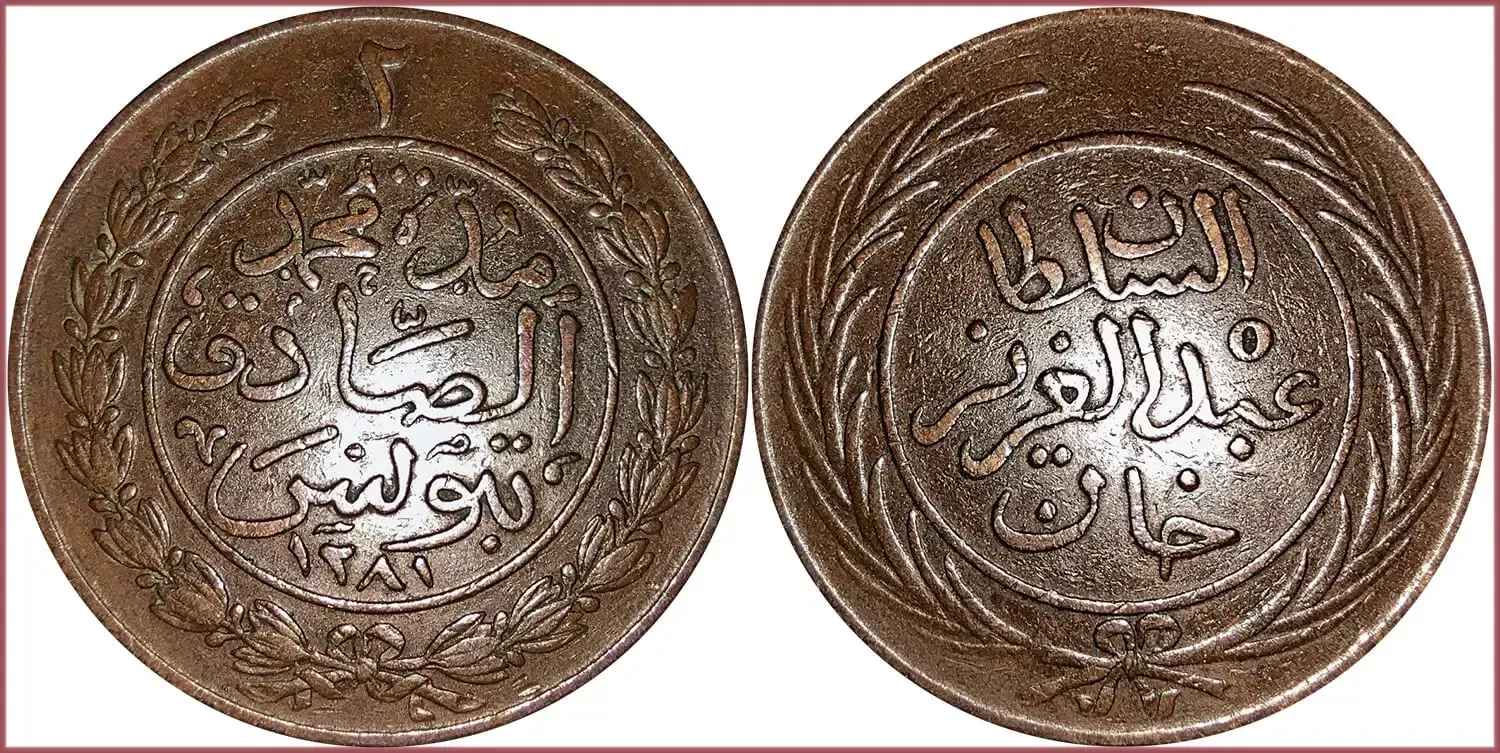KHARUB: COIN OF TUNISIA
2 kharub, 1865: Ottoman Tunisia
Date on coin: AH 1281 (AH: Latin "Anno Hegirae" — "the year of the Hijra"; Islamic calendar) = 1865 (Gregorian calendar).
Rulers: Abdulaziz as the 32nd sultan of the Ottoman Empire (1861-1876) and Muhammad III as-Sadiq as the Husainid (ruling Turkish dynasty of the Beylik of Tunis) Bey of Tunis (1859-1882).
۲: 2 (denomination of the coin).
The name of the issuing state, the name and title of the ruler in Arabic.
۱۲۸۱: 1281 (date by Islamic calendar).
Concentric circles and plant ornaments as the basis of the coin design.
Heaton Mint (mint of Birmingham, Great Britain).
Mintage: 12.000.000.
- Copper: 28 mm - 7.5 g
- Reference price: 20$
COIN KHARUB — WHERE & WHEN (coins catalog: by names & emitents)
- OTTOMAN TUNISIA (18th-19th centuries): kharub = 1/16 rial
- OTTOMAN ALGERIA (19th century): kharub = 1/48 budju
KHARUB as coin name.
Kharub — historical coin of two neighboring North African states with a similar history: Algeria and Tunisia, both of which were under the influence of the Ottoman Empire and France. The coin was minted during the 18-19 centuries.
Kharub of Algeria as an exchange coin of the local currency budju was issued in 1822-1842 (that is, before the French occupation). This small billon coin was worth 1/48 budju or 1/2 mazuna.
Kharub of Tunisia became widespread in the 19th century. It was a copper, billon or silver coin, depending on the denomination [1/4, 1/2, 1, 2, 4 or 8] and the period of issue. It was 1/16 of the local rial.
The name of kharub coin comes from the carob, whose seed served as the unit of weight for gems and precious metals in ancient times (for example, in the era of the Roman Empire, hard flat brown carob seeds were used in the Roman weight system as a measure of mass, equal to approximately 0.19 grams). — Thus, the name of the kharub coin is etymologically identical to the name of the Roman coin siliqua and to the carat (unit of measurement).

